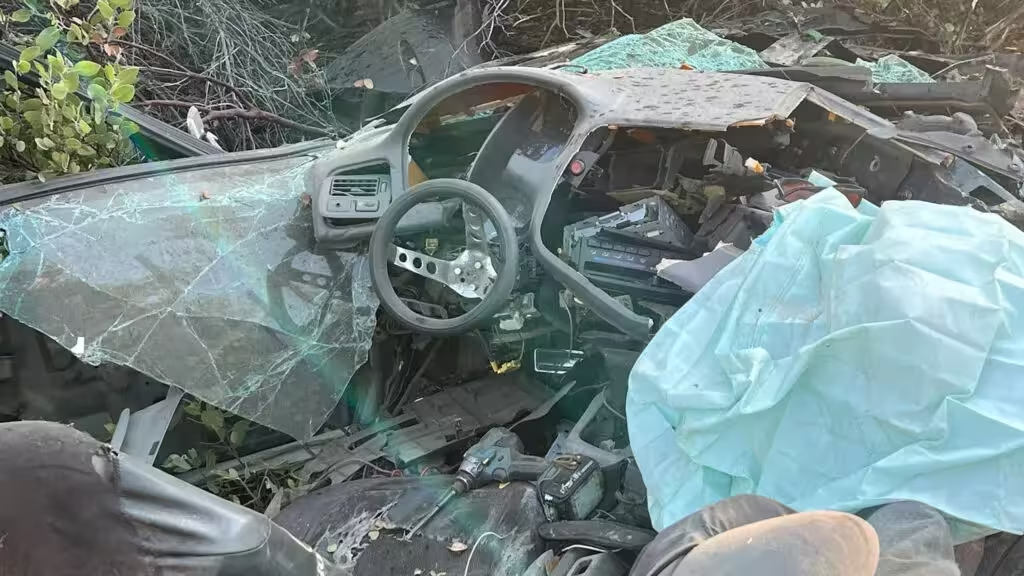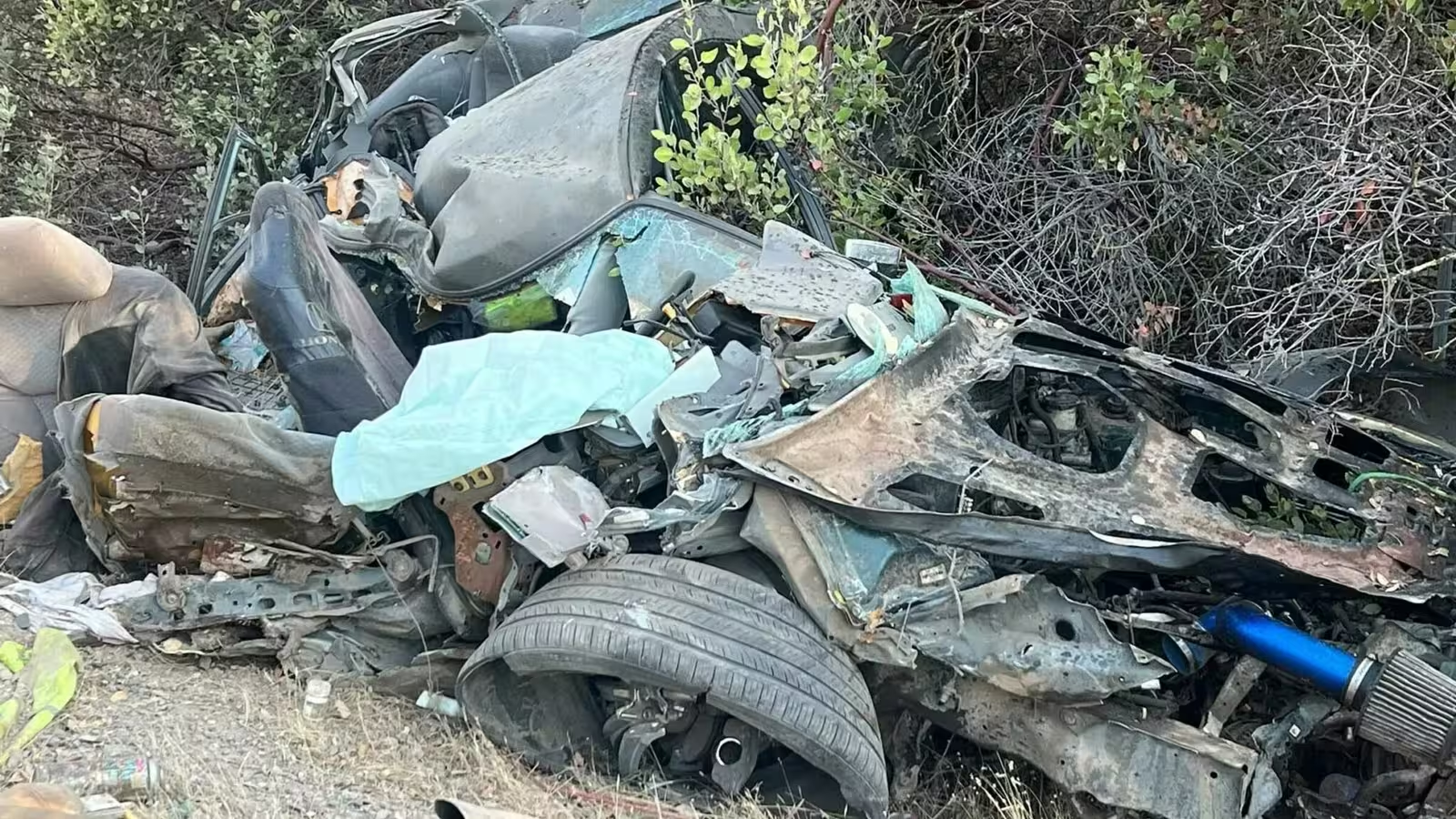4 Minutes
Strange Scene on Lake Camanche Parkway: A Civic Cut in Half
Emergency crews from Calaveras Consolidated Fire were left baffled after responding to a high-speed crash on Lake Camanche Parkway in Burson, California. Photos from the scene show a sixth-generation Honda Civic coupe ripped nearly in two: the roof and windshield were torn away, the floorpan appears split, and the cabin was left heavily distorted. Despite the severity of the wreck, rescuers reported no sign of the driver inside the vehicle. The California Highway Patrol (CHP) is conducting the active investigation.
What Responders Found
The wreck shows telltale signs of a violent impact against a tree off the roadway. The passenger airbag appears to have deployed, but investigators noted the aftermarket three-spoke steering wheel had likely removed the driver’s airbag. Visible modifications — an induction kit with cone air filter in the exposed engine bay and custom interior parts — indicate this Civic had been modified by an enthusiast prior to the collision. Social media posts from the local fire department and scene photos have fueled public speculation, but law enforcement has so far been unable to locate the driver in the area or in nearby hospitals.
Vehicle Specifications and Typical Sixth-Generation Civic Details
Classic compact coupe platform
The sixth-generation Honda Civic (mid-to-late 1990s model years) is a compact front-wheel-drive platform known for its light weight and tunability. Typical factory specifications across trim levels include a 1.6-liter inline-four gasoline engine, transmissions ranging from a 5-speed manual to a 4-speed automatic, and power outputs that commonly ranged from roughly 110 hp in base models up to about 160 hp for sportier Si versions. Suspension tuning favored nimble urban driving and aftermarket upgrades were common.
Aftermarket tuning and safety trade-offs
Many owners add cold-air intakes, cone filters, and lightweight steering wheels — changes that improve throttle response and driver feel but can remove factory safety systems like the driver airbag. That trade-off became a notable detail at this scene: the passenger airbag deployed, while the driver’s airbag was absent, aggravating concerns about survivability in such a violent crash.

Design, Performance and Market Positioning
In its original market positioning the Civic coupe offered an affordable, reliable entry-level sports-leaning car for younger buyers and tuners. The compact two-door body provided a sporty silhouette, efficient packaging, and relatively high aftermarket support. Compared with contemporaries such as the Toyota Corolla coupe or Mazda Protegé, the Civic gained popularity for its performance potential and strong community of modifiers.
Comparisons and Safety Context
Compared with modern compact cars, a late-1990s Civic lacks advanced crash avoidance systems, modern multi-stage airbags, and contemporary structural reinforcements. That said, the car’s light structure and aftermarket alterations can change how crash energy is absorbed. This accident underlines the critical importance of preserving factory safety systems when modifying a vehicle.
Ongoing Investigation and Community Reaction
Police are asking for witnesses and any dashcam footage that could explain how the driver left the scene after such a catastrophic impact. Online theories range from the vehicle having been abandoned prior to discovery to speculation about animals or a walker seen in the area. One witness claimed to have seen a man strolling away from the crash — a detail investigators are following up on. For now CHP continues to collect evidence and interview potential witnesses.
Note: All original scene images and captions published by Calaveras Consolidated Fire remain unchanged and have been retained in reporting.
Source: carscoops


Leave a Comment